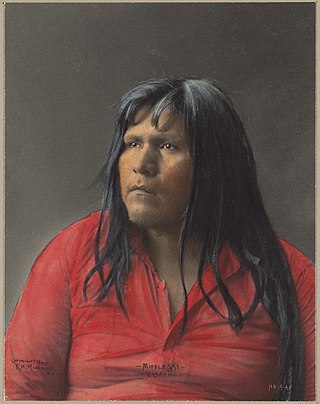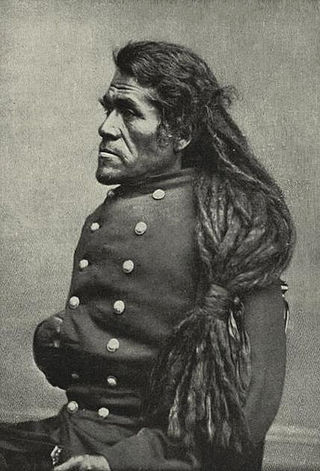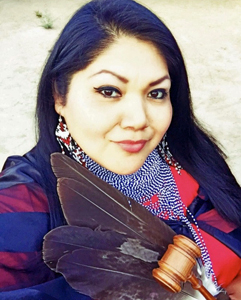Related Research Articles

The Cocopah are Native Americans who live in Baja California, Mexico, and Arizona, United States.

Mohave or Mojave are a Native American people indigenous to the Colorado River in the Mojave Desert. The Fort Mojave Indian Reservation includes territory within the borders of California, Arizona, and Nevada. The Colorado River Indian Reservation includes parts of California and Arizona and is shared by members of the Chemehuevi, Hopi, and Navajo peoples.

The Quechan, or Yuma, are a Native American tribe who live on the Fort Yuma Indian Reservation on the lower Colorado River in Arizona and California just north of the Mexican border. Despite their name, they are not related to the Quechua people of the Andes. Members are enrolled into the Quechan Tribe of the Fort Yuma Indian Reservation. The federally recognized Quechan tribe's main office is located in Winterhaven, California. Its operations and the majority of its reservation land are located in California, United States.

Indigenous music of North America, which includes American Indian music or Native American music, is the music that is used, created or performed by Indigenous peoples of North America, including Native Americans in the United States and Aboriginal peoples in Canada, Indigenous peoples of Mexico, and other North American countries—especially traditional tribal music, such as Pueblo music and Inuit music. In addition to the traditional music of the Native American groups, there now exist pan-Indianism and intertribal genres as well as distinct Native American subgenres of popular music including: rock, blues, hip hop, classical, film music, and reggae, as well as unique popular styles like chicken scratch and New Mexico music.
Indigenous music of Canada encompasses a wide variety of musical genres created by Aboriginal Canadians. Before European settlers came to what is now Canada, the region was occupied by many First Nations, including the West Coast Salish and Haida, the centrally located Iroquois, Blackfoot and Huron, the Dene to the North, and the Innu and Mi'kmaq in the East and the Cree in the North. Each of the indigenous communities had their own unique musical traditions. Chanting – singing is widely popular and most use a variety of musical instruments.
Blackfoot music is the music of the Blackfoot people. Singing predominates and was accompanied only by percussion.

The Maricopa or Piipaash are a Native American tribe, who live in the Salt River Pima-Maricopa Indian Community and Gila River Indian Community along with the Pima, a tribe with whom the Maricopa have long held a positive relationship. The Maricopa at the Salt River Pima-Maricopa Indian Community consist mostly of Xalychidom Piipaash members and are concentrated in Lehi. The Maricopa at the Gila River Indian Community are concentrated in Maricopa Colony. The Maricopa are a River Yuman group, formerly living along the banks of the Colorado River.
Pueblo music includes the music of the Hopi, Zuni, Taos Pueblo, San Ildefonso, Santo Domingo, and many other Puebloan peoples, and according to Bruno Nettl features one of the most complex Native American musical styles on the continent. Characteristics include common use of hexatonic and heptatonic scales, variety of form, melodic contour, and percussive accompaniment, melodic range averaging between an octave and a twelfth, with rhythmic complexity equal to the Plains Indians musical sub-area.
The Arapaho are a tribe of Native Americans from the western Great Plains, in the area of eastern Colorado and Wyoming. Traditional Arapaho music, described by Bruno Nettl, includes sacred and secular songs. Traditional music uses terraced descent type melodic motion, with songs consisting of two sections, each with a range of more than an octave and scales of four to six tones.
Navajo music is music made by the Navajos, mostly hailing from the Four Corners region of the Southwestern United States and the territory of the Navajo Nation. While it traditionally takes the shape of ceremonial chants and echoes themes found in Diné Bahaneʼ, contemporary Navajo music includes a wide range of genres, ranging from country music to rock and rap, performed in both English and Navajo.
Kiowa music is the music of the Kiowa Tribe of Oklahoma. The Kiowa are a federally recognized tribe, meaning they have a functioning government-to-government relationship with the United States government.

Quechan or Kwtsaan, also known as Yuma, is the native language of the Quechan people of southeastern California and southwestern Arizona in the Lower Colorado River Valley and Sonoran Desert. Despite its name, it is not related to the Quechua language of the Andes.

The Gourd Dance is a Kiowa dance and song tradition that has become popular at modern powwows in southwestern Oklahoma.

The Yavapai are a Native American tribe in Arizona. Historically, the Yavapai – literally “people of the sun” – were divided into four geographical bands who identified as separate, independent peoples: the Ɖulv G’paaya, or Western Yavapai; the Yaavpe', or Northwestern Yavapai; the Gwev G’paaya, or Southeastern Yavapai; and the Wiipukpaa, or Northeastern Yavapai – Verde Valley Yavapai.

Yaqui music is the music of the Yaqui tribe and people of Arizona and Sonora. Their most famous music are the deer songs which accompany the deer dance. They are often noted for their mixture of Native American and Catholic religious thought.
Suyá music is the music of the Suyá people, a tribe of about 150 people who live on the Suyá-Miçu River and are native to Mato Grosso, Brazil. Their houses are set up in a circle around the village square, where the majority of their ceremonies take place. Other buildings include a men's meeting house where there is almost always singing. Speech and hearing are highly valued in the social behavior of the tribe. The Suyá Indians symbolize their importance with body decorations that include ear and lip disks. In 1980, ethnomusicologist Anthony Seeger interpreted this body ornamentation as an emphasis on orality and listening as a principal means of perception, transmission, comprehension, and expression of fundamental values.

Paradise Casino is a small tribal casino located just outside of Yuma, Arizona on the Fort Yuma Indian Reservation. The property straddles the Arizona–California state line, but the casino building lies in Arizona. It is owned and operated by the Quechan Tribe of the Fort Yuma Indian Reservation.

The Yuma War was the name given to a series of United States military operations conducted in southern California and what is today southwestern Arizona from 1850 to 1853. The Quechan were the primary opponent of the United States Army, though engagements were fought between the Americans and other native groups in the region.

Irataba was a leader of the Mohave Nation, known as a mediator between the Mohave and the United States. He was born near the Colorado River in present-day Arizona. Irataba was a renowned orator and one of the first Mohave to speak English, a skill he used to develop relations with the United States.

Claudette Christine White was an American Chief Judge for the Quechan Tribal Indian Court from 2006 to 2020 and for the San Manuel Band of Mission Indians from 2018 to 2020.
References
- Nettl, Bruno (1965). Folk and Traditional Music of the Western Continents. Prentice-Hall, Inc.
- Herzog, George. "Music in the Thinking of the American Indian." Peabody Bulletin, May 1933. Cited in Nettl (1965).
- Ortiz, Alfonso, vol. ed. William C. Sturtevant, gen. ed. Handbook of North American Indians: Southwest, Volume 10. Washington, DC: Smithsonian Institution, 1983.